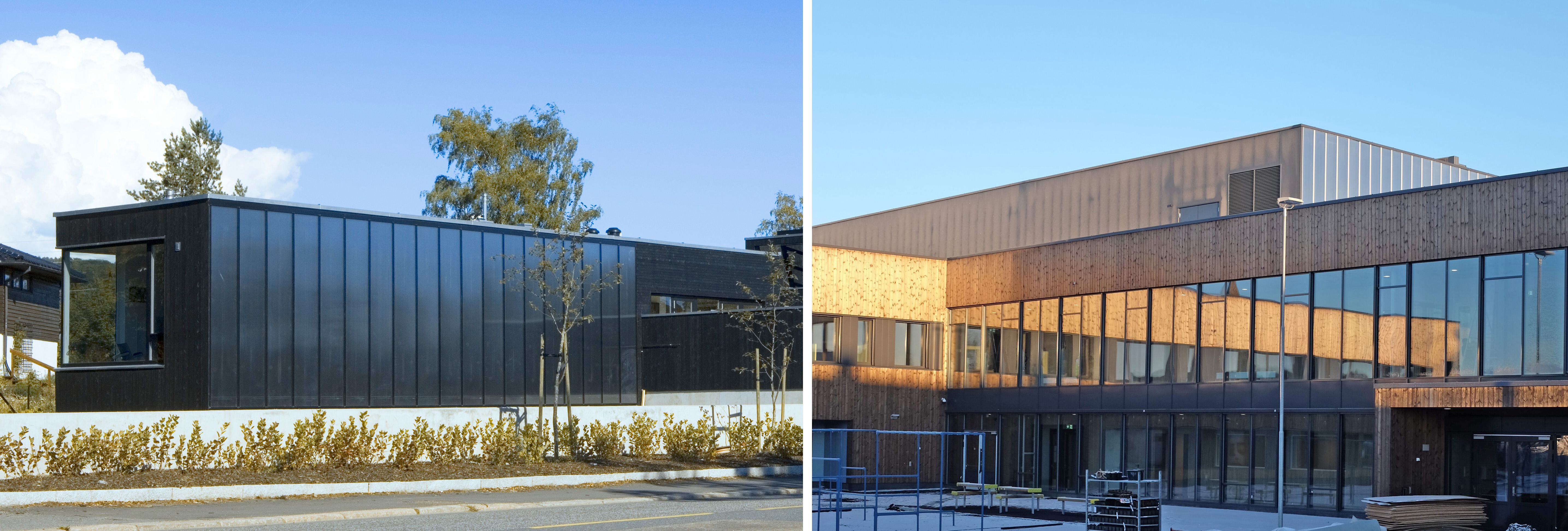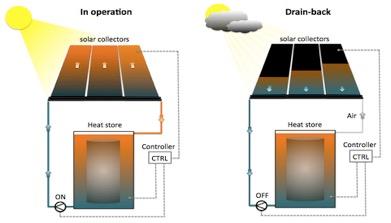Solar Energy Harvesting Systems
Commercial Systems
Inaventa Solar Building-Integrated Collectors (BIST)
By Michaela Meir, Inaventa Solar AS, Norway
Product Description
Brief Concept Description
Inaventa Solar collectors are building-integrated solar thermal panels that capture solar heat, which can then be used for domestic hot water preparation and/or space heating. The collectors are water-based and consist of a transparent cover and a structured hollow sheet of high-performance polymers used as absorber. As shown by Carlsson et al. (2014), the use of polymeric solar collectors offers better results in terms of Life Cycle Assessment (LCA) with respect to traditional solutions. Furthermore, Inaventa Solar collectors introduced the innovative use of high-performance polymers processed to twin-wall sheets: the process was demonstrated worldwide for the first time during early 2010 (formerly owned by Aventa AS).

Figure 06. Cross section of the Inaventa Solar collector
Architectural and Technological Integration into the Envelope
Inaventa Solar solar collectors are designed for building integration, since they are building envelope modules that replace regular roof or façade elements. AventaSolar collectors are available in different sizes and their installation can perfectly adapt to the building´s envelope surface. The use of polymeric materials results in low-weight modules (approximately 8 kg/m2) that are easy to handle and position. The installation can be carried out by any skilled building envelope installer without cranes or special equipment other than what is normally available on a building site, allowing to achieve time and cost savings.
Integration into the Building: System and Comfort
Inaventa Solar systems can be used in different scales, from small tap-water systems for private houses to large industrial or institutional systems. Preferred applications are in buildings with high domestic hot water demand and/or low temperature heating, such as hospitals, sport facilities, schools, multi-apartment buildings, row or single houses with floor heating. Inaventa Solar collectors are integrated to drain-back systems (shown in Figure 9), and pure water is used as heat carrier in place of a water-glycol mixture. With this solution, the use of a heat exchanger between collector loop and thermal storage is avoided and the overall hydraulic design is simplified since the collector circuit is open to atmospheric pressure. The solar system is automatically operated by means of a pump controller: water circulates in the collector loop when solar energy can be harvested but drains back to the thermal storage during system standstill to prevent overheating or freezing.
The overall concept is a considerable step forward to demonstrate that an aesthetic and easy integration of solar thermal solutions into the envelope is possible: the dimensional flexibility, the simple and non-pressurized hydraulic design, the use of standardized plug-and play components together with an appealing design allow Inaventa Solar collectors to overcome many of the barriers that hinder the spread of building-integrated solar thermal technologies.

Figure 08. Facade-integrated Inaventa Solar collectors: installations in a multi-family atrium house in Oslo (solar combi system and sound protection wall, left) and integrated in the south facade of the rooftop building extension of Bjørkelangen school (solar DHW pre-heating, right).

Figure 09. Schematics a drain-back solar system during operation (on the left) and standstill (on the right).
SWOT Analysis
Strengths
- Modular design: the customisable length of the collectors allows an easy and architecturally appealing integration into roof and facade
- The low weight of the panels ensures a trouble-free handling during transport and installation
- Cost savings are achieved thanks to the methods for processing polymer materials, the installation of non-pressurised collectors and the implementation of simple drainback loop design
- The installation of the panels does not require HVAC specialists, rather it can be performed by any skilled building envelope installer
- The use of pure water as heat carrier makes the solution more environmentally friendly
Weaknesses
- Non-pressurised collectors are not directly compatible with conventional solar system components
- The drainback collector loop design in high-rise buildings requires solar pumps with significantly higher electricity consumption compared to conventional solar thermal systems
Opportunity
- Successful integration examples could inspire architects and decisions-makers to adopt this solution
- European directives and global agreements on lowering carbon emissions in construction sector are fertile ground for cost-effective RES solutions
Threats
- Non-pressurised collector and solar loop have yet to become very common and are met with scepticism by the heating industry
- Scepticism or little knowledge on high-performance polymers might hinder market penetration
- National or regional building regulations prevent the integration of certain polymeric materials into the building envelope
Lessons Learned
- The integration of solar systems and related infrastructure in the envelope need to be planned early in the building design process.
- Planners, architects and building designers are keen on technologies that are modular and flexible in dimensions so that their integration into the building envelope is easier. In general, it is important that the solar envelope elements are designed to have similar weight and size as typical building envelope modules.
- Working in close contact with the building industry is an opportunity to optimize the workflows and achieve cost savings in the installation process of solar envelope systems.
- There is still little knowledge about solar technologies operation and performance.
Further Reading
Carlsson B., Persson H. Meir M., Rekstad J. A total cost perspective on use of polymeric materials in solar collectors – Importance of environmental performance on suitability. Applied Energy 125 (2014) 10-20.
Köhl M. et. al. (ed.) (2012). Polymeric Materials for Solar Thermal Applications. Wiley-VCH Verlagsgesellschaft. ISBN 978-3-572-33246-5. 393 pages.
Company website: www.inaventasolar.com